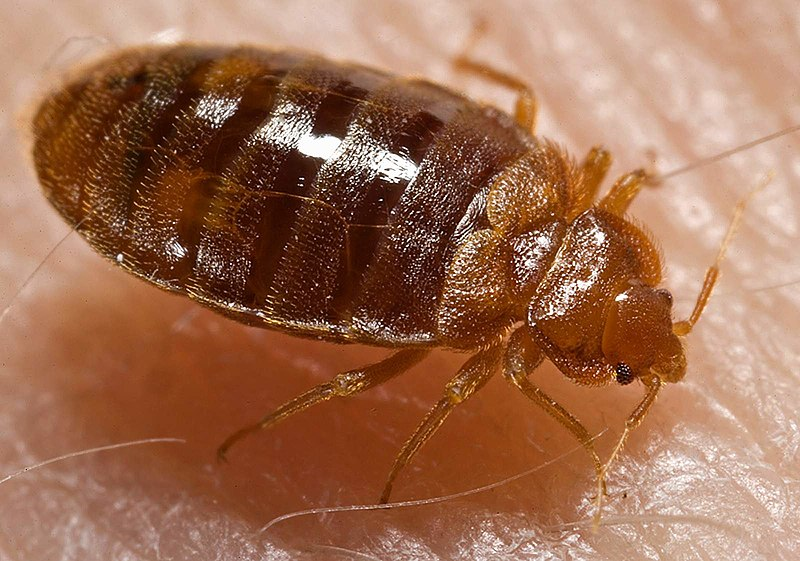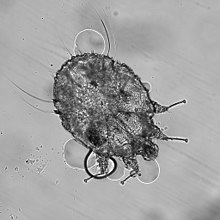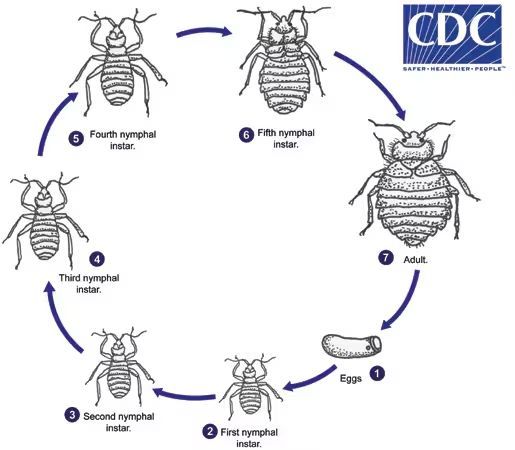Bed Bugs vs. Scabies
Identification & Differences Between Bed Bugs & Scabies
Request Your Appointment
Bed Bugs Vs. Scabies In New Jersey
Bed bugs and scabies are two common pests that can cause significant discomfort and health concerns. While both are known for causing itchy skin reactions, they differ in their biology, modes of transmission, and treatment methods. Understanding these differences is crucial for effective identification, treatment, and prevention.
Bed Bugs

- Adult bed bugs are usually the size of an apple seed
- Have 6 legs
- Oval in shape
- No wings
- Flat when unfed, full after blood meal
Scabies

- Microscopic, invisible to naked eye
- Burrows into upper level of human skin
- Round, white or cream colored body with 8 legs
- No wings
- Causes intense itching with rash

What are bed bugs?
The common bed bug (Cimex lectularius) is a small insect that primarily feeds on human blood but can also target other warm-blooded animals. They often infest areas where people gather and are drawn to the carbon dioxide emitted during respiration.
What is scabies?
According to WebMD, scabies is an infestation caused by microscopic mites known as Sarcoptes scabiei. Rather than an infection, these mites burrow into the outer layers of the skin, laying two to three eggs daily. They can continue tunneling within the skin for up to 10mm.
What are the signs of a bed bug infestation?
Common signs of a bed bug infestation include:
- Active or dead bugs found on mattress, box springs, bed frames, couches, or other furniture.
- Bites or itching on arms, legs, and other body parts
- Fresh or dried blood on fabric like bedding, pillow cases, curtains, walls or clothes
- Tiny black droppings on infested items including mattresses, pillows, dust covers, box springs, bed frames.
What are the signs or symptoms of scabies?
Common signs of scabies include:
- Intense itching, mainly at night
- Rash that causes bumps that might look like hives, tiny bites, or even pimples
- Sores that result from scratching too much and can lead to infection
- Irritability
Key Differences Between Bed Bugs and Scabies
| Aspect | Bed Bugs | Scabies |
|---|---|---|
| Organism Type | Insects visible to the naked eye | Microscopic mites |
| Habitat | Live in furniture, mattresses, and crevices; feed on blood | Burrow into the skin to live and lay eggs |
| Transmission | Spread through infested furniture, luggage, and clothing | Spread through prolonged skin-to-skin contact |
| Symptoms | Red, itchy welts on exposed skin; may appear in lines or clusters | Intense itching, especially at night; pimple-like rash; burrow tracks |
| Treatment | Requires pest control measures to eliminate infestation | Medical treatment with prescription scabicides; treating close contacts |
| Prevention | Regular inspection and cleaning of living areas; caution with second-hand items | Avoiding direct skin contact with infested individuals; maintaining personal hygiene |
Treatment and Prevention
Bed bugs
- Inspection and Cleaning: Regularly inspect sleeping areas and furniture for signs of bed bugs, such as live insects, shed skins, or dark spots. Wash bedding and clothing in hot water and dry on high heat to kill bed bugs and their eggs.
- Professional Pest Control: Due to their resilience and ability to hide in small crevices, bed bug infestations often require professional pest control services for effective eradication.
Scabies
- Medical Treatment: Consult a healthcare provider for diagnosis and treatment. Prescription scabicides are applied to the entire body to eliminate mites and their eggs. It's essential to follow the treatment regimen precisely.
- Treating Close Contacts: Since scabies is highly contagious, it's crucial to treat all household members and close contacts simultaneously, even if they are asymptomatic, to prevent reinfestation.
- Environmental Cleaning: Wash clothing, bedding, and towels used by the infested person in hot water and dry on high heat. Items that cannot be washed should be sealed in a plastic bag for at least 72 hours to ensure mites are killed.
Request your Bed Bug Service
Call Or Text Us
Contact Resolve Pest Management today and let us be your professional partner in eliminating Bed Bugs from your Home Or BUsiness. Call 732-527-5770!




